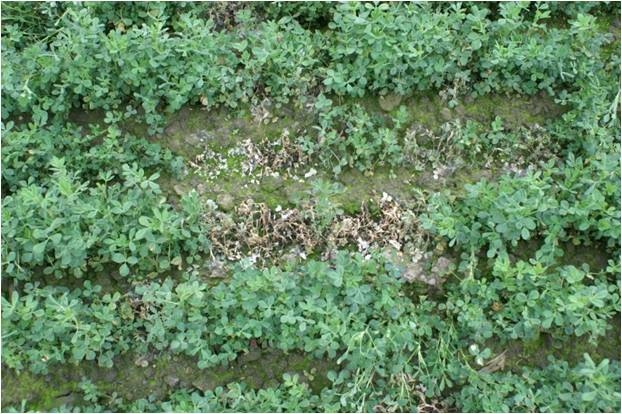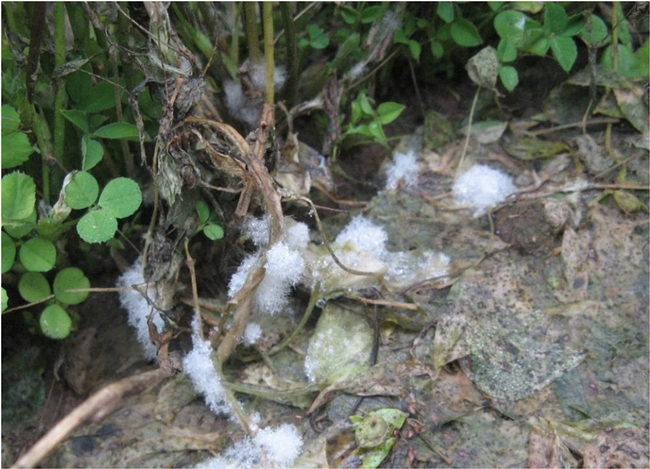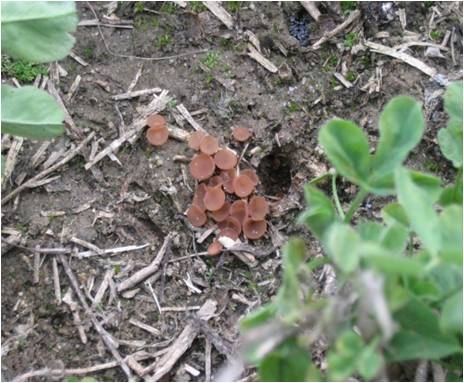
The disease begins in the late fall/early winter when spore bearing structures (apothecia) are produced by the fungus on the soil surface. Apothecia production is triggered by cold, wet soil. We have had some cold weather and in many places in the Central Valley there has been sufficient rain to promote apothecia production. Spores, which will spread in the air, are produced in the apothecia. Fog provides optimum environmental conditions for disease spread, infection, growth of the fungus, and damage to the alfalfa. Nothing could be better for disease development than consecutive foggy days with no sunshine. (To look for apothecia, go to an established field that you know had Sclerotinia when it was newly planted and that has been recently cut so that the soil surface is visible. Look where there are gaps in the stand because if the missing plant was killed by Sclerotinia, then there is a good chance that is where apothecia will form).
Until last year, the only tool available to manage this disease was a burn-down herbicide such as paraquat to reduce and thin the canopy. Then, if the sun came out, the foliage could dry and the humidity in the crop canopy would be reduced, making conditions less favorable for the fungus.
The fungicide Pristine is now registered on alfalfa in California. There have been several UC trials evaluating Pristine for use on Sclerotinia. Its value depends on whether the disease is present and how favorable conditions are for disease development. As with most fungicides, Pristine performs best when it is applied prior to, or just after, infection occurs. Because this disease is so humidity-dependent, disease severity is very dependent on the weather. If Pristine is applied and then 10 days of sunshine follow, the benefit of the fungicide application will be less than if the application was followed by foggy days. One thing is clear in our trials though – if applied too late, Pristine doesn’t help.
The bottom line is we have a tool that will help reduce losses from this disease but deciding when to use it will be difficult. At this point, watch carefully for the first symptoms of disease and then consider an application if persistent fog is forecast.
For more information on symptoms and the disease cycle of Sclerotinia Stem and Crown Rot: http://cetulare.ucanr.edu/files/156774.pdf
For a detailed report on a fungicide trial with Pristine: http://kare.ucanr.edu/files/123940.pdf
Attached Images:

